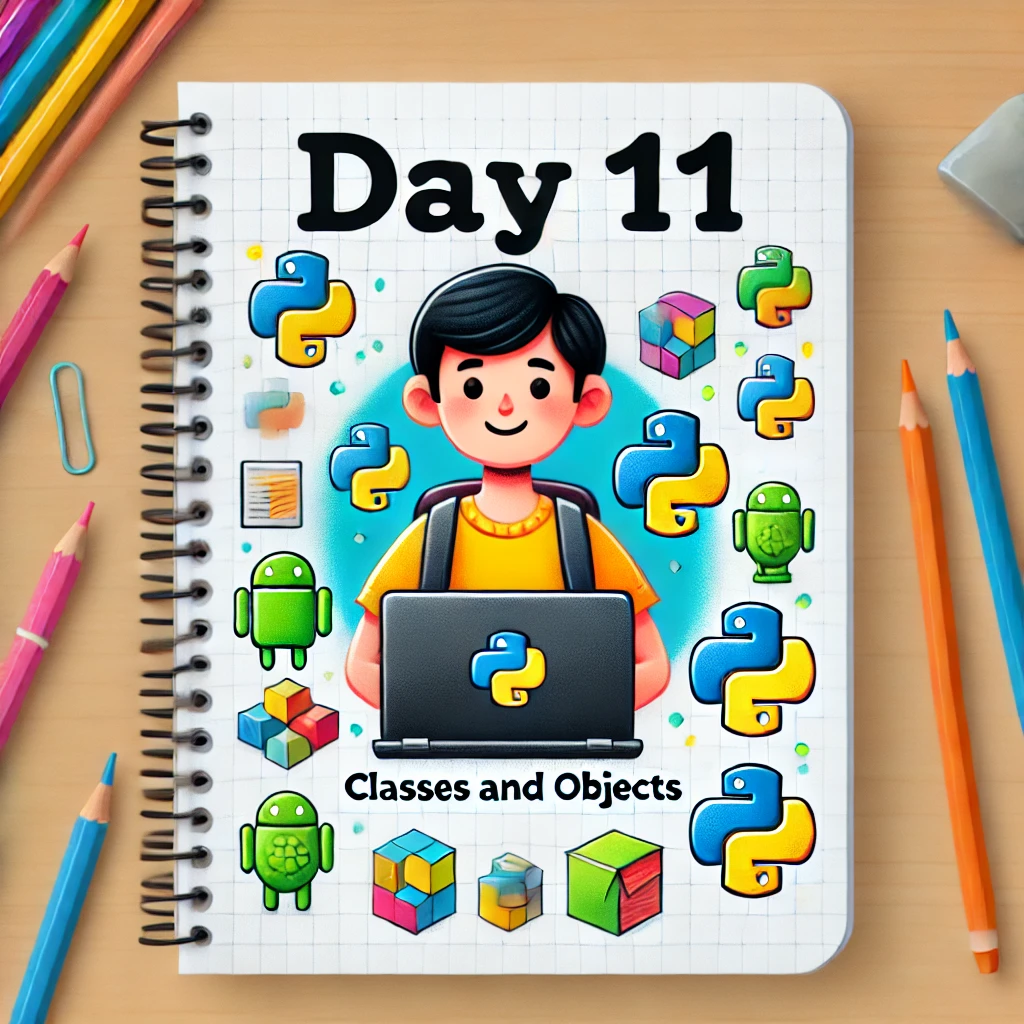Welcome back! Yesterday, we learned about dictionaries and sets in Python. Today, we’ll dive into classes and objects, which are the foundation of object-oriented programming (OOP). By the end of this day, you’ll know how to create and use classes and objects in Python. Let’s get started!
What are Classes and Objects?
Classes: Templates for creating objects. They define the properties and behaviors that the objects created from the class will have.
Objects: Instances of classes. They represent specific examples of the class.
Creating a Class
You can define a class using the class keyword followed by the class name and a colon. Inside the class, you can define attributes and methods.
class Dog:
# Class attribute
species = "Canis familiaris"
# Initializer / Instance attributes
def __init__(self, name, age):
self.name = name
self.age = age
# Instance method
def description(self):
return f"{self.name} is {self.age} years old"
# Another instance method
def speak(self, sound):
return f"{self.name} says {sound}"Creating an Object
You can create an object (an instance of a class) by calling the class as if it were a function:
# Creating an instance of the Dog class
my_dog = Dog("Buddy", 3)
print(my_dog.name) # Output: Buddy
print(my_dog.age) # Output: 3
print(my_dog.species) # Output: Canis familiaris
print(my_dog.description()) # Output: Buddy is 3 years old
print(my_dog.speak("Woof")) # Output: Buddy says WoofClass and Instance Attributes
Class Attributes: Shared by all instances of the class. Defined outside the init method.
Instance Attributes: Unique to each instance. Defined inside the init method.
Methods
Methods are functions defined inside a class that describe the behaviors of the objects. The first parameter of a method is always self, which refers to the instance calling the method.
Inheritance
Inheritance allows you to create a new class based on an existing class. The new class (child class) inherits attributes and methods from the existing class (parent class).
Example:
class Dog:
def __init__(self, name, age):
self.name = name
self.age = age
def description(self):
return f"{self.name} is {self.age} years old"
def speak(self, sound):
return f"{self.name} says {sound}"
# Inheriting from the Dog class
class Bulldog(Dog):
def run(self, speed):
return f"{self.name} runs {speed}!"
my_bulldog = Bulldog("Rocky", 5)
print(my_bulldog.description()) # Output: Rocky is 5 years old
print(my_bulldog.speak("Woof")) # Output: Rocky says Woof
print(my_bulldog.run("slowly")) # Output: Rocky runs slowly!Practice Time!
Let’s put what we’ve learned into practice. Write a Python program that defines a class, creates objects, and demonstrates inheritance.
# Defining the Vehicle class
class Vehicle:
def __init__(self, make, model, year):
self.make = make
self.model = model
self.year = year
def description(self):
return f"{self.year} {self.make} {self.model}"
# Defining the Car class that inherits from Vehicle
class Car(Vehicle):
def __init__(self, make, model, year, doors):
super().__init__(make, model, year)
self.doors = doors
def car_description(self):
return f"{self.description()} with {self.doors} doors"
# Creating an instance of the Car class
my_car = Car("Toyota", "Camry", 2020, 4)
# Using methods from both Vehicle and Car classes
print(my_car.description()) # Output: 2020 Toyota Camry
print(my_car.car_description()) # Output: 2020 Toyota Camry with 4 doorsConclusion
Great job today! You’ve learned how to create and use classes and objects in Python, which are fundamental concepts in object-oriented programming. Tomorrow, we’ll dive into inheritance and polymorphism, which will help you create more flexible and reusable code. Keep practicing and having fun coding!

Leave a Reply